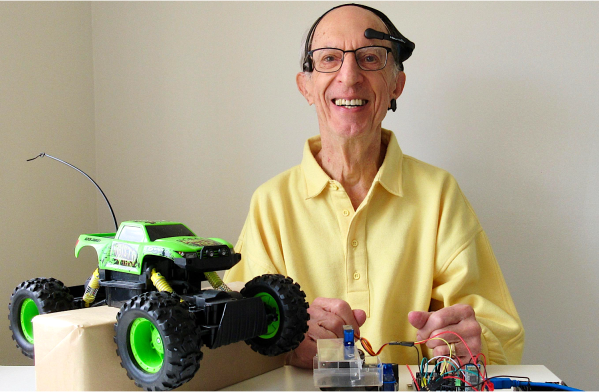We know you love a good biohack as much as we do, so we thought you would like [Tony’s] brainwave-controlled RC truck. Instead of building his own electroencephalogram (EEG), he thought he would use NeuroSky’s MindWave. EEGs are pretty complex, multi-frequency waves that require some fairly sophisticated circuitry and even more sophisticated signal processing to interpret. So, [Tony] thought it would be nice to off-load a bit of that heavy-lifting, and luckily for him, the MindWave headset is fairly hacker-friendly.
EEGs are a very active area of research, so some of the finer details of the signal are still being debated. However, It appears that attention can be quantified by measuring alpha waves which are EEG content between 8-10 Hz. And it seems as though eye blinks can be picked from the EEG as well. Conveniently, the MindWave exports these energy levels to an accompanying smartphone application which [Tony] then links to his Arduino over Bluetooth using the ever-so-popular HC-05 module.
To control the car, he utilized the existing remote control instead of making his own. Like most people, [Tony] thought about hooking up the Arduino pins to the buttons on the remote control, thereby bypassing the physical buttons, but he noticed the buttons were a bit smaller than he was comfortable soldering to and he didn’t want to risk damaging the circuit board. [Tony’s] RC truck has a pistol grip transmitter, which inspired a slightly different approach. He mounted the servo onto the controller’s wheel mechanism, allowing him to control the direction of the truck by rotating the wheel using the servo. He then fashioned another servo onto the transmitter such that the servo could depress the throttle when it rotates. We thought that was a pretty nifty workaround.
Cool project, [Tony]! We’ve seen some cool EEG Hackaday Prize entries before. Maybe this could be the next big one.
Continue reading “Self-Driving Or Mind Control? Which Do You Prefer?”

















